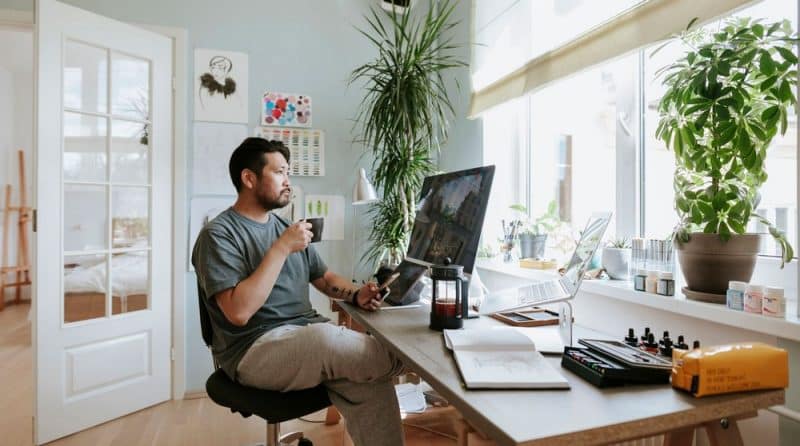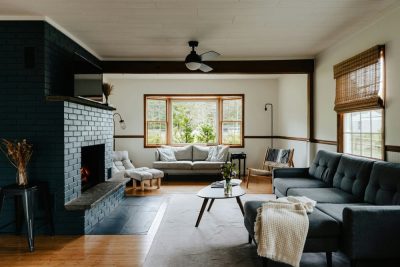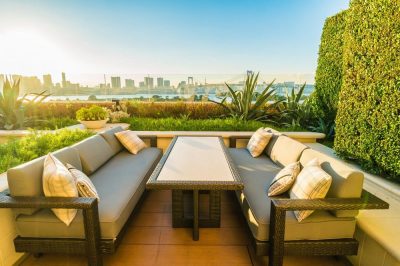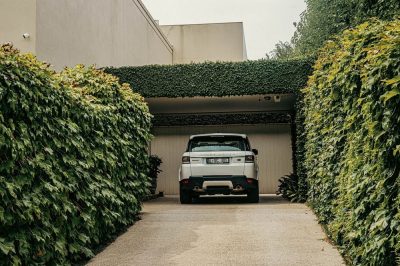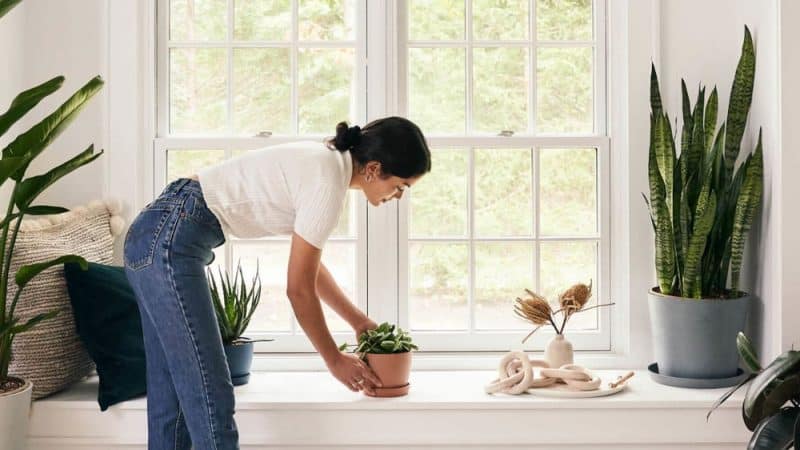
In today’s fast-paced world, the desire to reconnect with nature and create harmonious living environments has sparked a notable trend: biophilic designs and green spaces. Incorporating plants into home design, ranging from vibrant exotics to diminutive succulent wonders, has become an essential element of home decor. They provide not only aesthetic pleasure but also environmental and psychological comfort that many people may not be aware of. By bringing plants indoors, you can create a living space that is vibrant and calming. Here we discuss how nature can be incorporated into your home along with its aesthetic benefits, offering a whole new perspective on where we live.
The Benefits of Indoor Plants
Aesthetic Appeal and Environmental Benefits
One of the most visible benefits of indoor plants is their ability to make our homes beautiful and cheerful. However, there is more to them than just their aesthetic appeal. Indoor plants provide numerous health benefits and become our caring partners in building a healthy and happy home. The air purification effect of indoor plants is demonstrated when they remove impurities from the air and release oxygen, thus improving the air quality inside buildings.
Psychological Benefits
Green plants have been reported in literature to uplift the mood and reduce stress, making the environment around oneself peaceful and restorative. Research findings confirm the positive outcomes on the well-being of people, both mentally and physically. Exposure to indoor plants can decrease stress, lower blood pressure, and promote calmness and overall mental health. Additionally, the activity of nurturing plants can foster a sense of responsibility and mindfulness, sharpening cognitive abilities and strengthening emotional resilience.
Health Benefits
When we introduce plants as indoor decor, the visual effect they bring into our living spaces is not the only benefit. They generate clean air, improve mood, and support overall well-being. Indoor plants are irreplaceable companions in the pursuit of a thriving and balanced home.
Choosing the Right Plants for Your Space
Selecting the right plants for your home involves considering several key factors to ensure their survival and your enjoyment.
Assess Lighting Conditions
Start by checking the lighting conditions of the area where you want to place the plant. Some plants thrive in bright, indirect light, such as fiddle leaf figs or succulents, while others, like snake plants or pothos, do well in low-light conditions. Match the light demands of the plants with the natural light in your home to ensure healthy growth. Observe how much natural light each room receives throughout the day and choose plants accordingly.
Consider Space Availability
Space availability is crucial. Choose plants that fit well within your available space, whether you’re working with a large living room or a small apartment. In larger rooms, you can incorporate sizable floor plants like monstera or palms. In smaller spaces, explore vertical possibilities such as hanging planters, wall-mounted shelves, or tall, slim plants that add greenery without taking up much floor space.
Match Maintenance Needs
Different plants have varying maintenance needs. Ensure you select plants that align with your maintenance routine and lifestyle. If you don’t have much time for maintenance or are new to plant care, choose low-maintenance plants like succulents, snake plants, or ZZ plants. These plants are hardy and can tolerate periods of neglect, making them ideal for busy individuals or beginners.
By considering lighting conditions, space availability, and maintenance needs, you can choose the perfect plants to enhance your home environment and ensure they thrive.
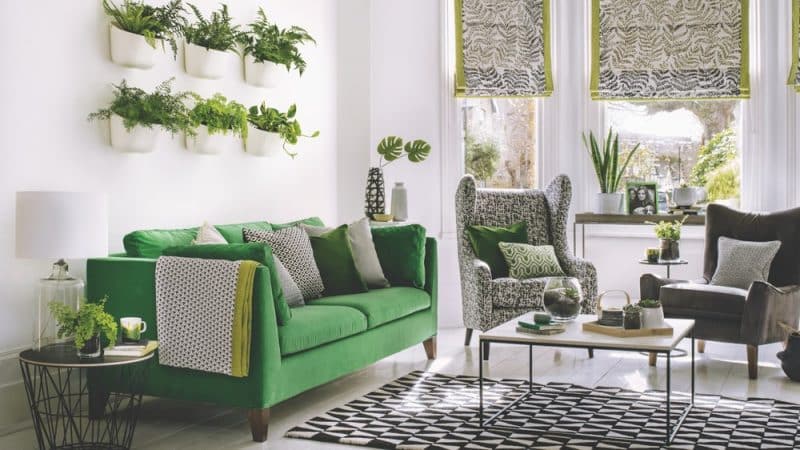
Incorporating Plants into Different Rooms
Living Room
In the living room, a large, dramatic plant can be strategically placed as a focal point. This could be a tall fiddle leaf fig, a lush monstera, or a majestic palm. Placing a large plant in a stylish pot in a corner or near a window can draw the eye and add a sense of vitality to the room. Several smaller plants grouped on coffee tables, side tables, or floating shelves can add freshness to the decor. Consider using plants like spider plants, pothos, or succulents. Grouping these plants in clusters of three or five creates a balanced and visually appealing arrangement. Use decorative pots or planters to enhance the aesthetic appeal. Elevate the look of your living room by incorporating plant stands, which can add height and variety to your plant display. A mix of tall and short plants on different levels creates depth and interest in the space.
Choose plants that complement your existing decor. For example, if your living room has a modern aesthetic, opt for sleek, minimalist planters and geometric plant stands. For a more bohemian look, mix different types of plants and use eclectic, colorful pots. Integrating plants with your decor ensures a cohesive and harmonious appearance.
Bedroom
Bedrooms can be transformed into tranquil sanctuaries with plants like lavender or jasmine near windows to release their sweet scents. These plants not only look beautiful but also have calming properties that can improve sleep quality. Hanging plants like pothos, philodendron, or string of pearls add dimension and are ideal for small spaces. Hang them in macrame hangers or stylish wall-mounted planters to save floor space and create a cascading green effect.
Place small, low-maintenance plants like succulents or aloe vera on your nightstand. These plants are easy to care for and add a touch of greenery to your bedside area. Aloe vera also has air-purifying properties, making it a great addition to the bedroom. Utilize window sills for small potted plants or herb gardens. The natural light from the window will help these plants thrive, and they can create a mini indoor garden right by your bed.
Kitchen
Herb gardens on sunny windowsills or shelf-style countertop plant stands are perfect for kitchens. They provide fresh herbs for cooking and add greenery to the space. Plants like basil, mint, thyme, and rosemary are easy to grow and handy for culinary use. Consider creating a vertical garden using wall-mounted planters or tiered shelves. This is an efficient way to maximize space and keep your herbs within easy reach. Vertical gardens can also serve as a living piece of art in your kitchen.
Use decorative pots that match your kitchen’s color scheme or theme. Ceramic, terracotta, or even repurposed containers can add character and charm to your kitchen herb garden. If counter space is limited, use hanging planters for herbs or small plants. This not only saves space but also adds a unique visual element to your kitchen decor.
Bathroom
Bathrooms can become small oases with ferns, orchids, or air plants hanging from pots and shelf units. The humidity and mist from showers create ideal conditions for these plants to thrive. Ferns like the Boston fern or maidenhair fern are particularly well-suited for bathroom environments. Install shelving units to display a variety of plants. This can be a mix of potted plants and trailing vines that cascade down the shelves, creating a lush, green display.
Place plants like spider plants or bromeliads in hanging planters near the shower. The steam and humidity will keep them happy and healthy. These plants can also help improve air quality and add a touch of nature to your daily routine. Smaller plants like aloe vera or peace lilies can be placed on bathroom countertops. They are easy to maintain and add a refreshing touch of green to your bathroom decor.
Home Office
A home office benefits from green surroundings with plants on desks or shelves. Succulents, snake plants, and ZZ plants are great options as they require minimal care and can thrive in low light conditions. These plants can help reduce stress and improve concentration, boosting productivity. Use shelving units or wall-mounted planters to add greenery to your workspace. This not only saves desk space but also creates an inspiring and calming environment. Consider plants like pothos, philodendron, or small ferns.
Consider using planters that double as storage solutions. For example, a desk organizer with built-in plant holders can keep your workspace tidy while adding a touch of nature. Choose air-purifying plants like spider plants, peace lilies, or rubber plants for your home office. These plants can improve air quality and create a healthier working environment.
Get creative with your plant displays. Use terrariums, glass jars, or repurposed containers to add a unique touch to your office decor. Incorporating plants into your workspace can make it more inviting and pleasant.
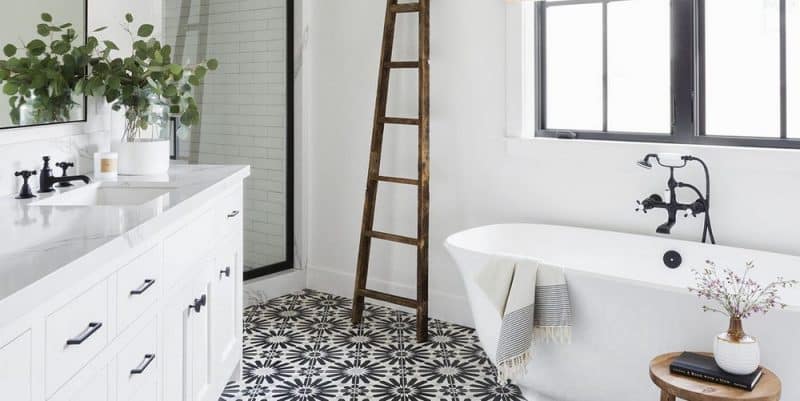
Styling with Greenery: Tips and Tricks
Coordinate with Decoration Style
Bringing a lively interior design by combining plants is not just about placing them next to each other; it’s also about coordinating them with your decoration style. For minimalist areas, select classic, clear-cut vases and a few carefully set plants to maintain simplicity. Choose plants with clean lines and simple shapes, such as succulents, snake plants, or a single large statement plant like a fiddle leaf fig. This approach keeps the space uncluttered and enhances the minimalist aesthetic.
Embrace Bohemian Style
Bohemian interiors often accommodate numerous plants in various containers, creating a lush, green landscape that forms a breathtaking aesthetic. Use a mix of hanging plants, potted plants, and trailing vines to create a vibrant and eclectic look. Incorporate plants of different heights, textures, and colors to achieve a layered, dynamic effect. Combine plants with boho-inspired decor items like macrame hangers, woven baskets, and colorful ceramic pots to enhance the free-spirited and natural vibe.
Emphasize Colors and Textures
Coordinate plants with your existing themes by emphasizing colors and textures. For example, if your color scheme is based on greens, choose plants with similar foliage to match. This can include a mix of dark green, light green, and variegated leaves to add depth and interest. Mixing different leaf shapes and sizes, such as broad leaves of a monstera and the delicate fronds of a fern, can create visual interest and complexity.
Match Foliage to Color Schemes
If your interior features a specific color palette, select plants that complement these colors. For instance, in a room dominated by warm tones, consider plants with red or orange undertones, such as the Calathea or Red Aglaonema. In cooler-toned rooms, plants with silvery or blue-green foliage, like eucalyptus or blue fescue, can harmonize beautifully.
Choose the Right Planters
Use planters made from materials like ceramic, rattan, or metal to add texture and depth to your decorations. The choice of planter can significantly impact the overall look of your plant display. For a modern look, opt for sleek, geometric ceramic planters in neutral tones. For a rustic or farmhouse style, consider terracotta pots, wooden planters, or galvanized metal containers.
Mix and Match Planter Styles
Creating a cohesive and vibrant atmosphere involves not just the plants themselves but also how they are presented. Mix and match different styles of planters to add variety and interest. For example, a combination of hanging planters, floor-standing pots, and tabletop containers can create a dynamic and layered effect. Consider the placement of these planters to ensure they enhance rather than overwhelm the space.
Incorporate Planters with Functional Elements
Planters can also serve functional purposes beyond just holding plants. Consider using planters that double as storage solutions, such as those with built-in shelves or compartments. This can help keep your space organized while adding a touch of greenery. Additionally, using wheeled planters can make it easier to move larger plants around, allowing you to experiment with different layouts and configurations.
Create Plant Vignettes
Design small, curated plant vignettes to add focal points throughout your home. Group plants of different sizes and shapes together to create visually interesting displays. Use plant stands, trays, and decorative elements like stones or sculptures to enhance these vignettes. These small, intentional groupings can bring a sense of cohesion and style to your interior design.
Layer Plants for Depth
To create a lush and vibrant look, layer plants at different heights. Use tall floor plants, mid-height tabletop plants, and small shelf plants to create a sense of depth and dimension. This layered approach can make your space feel more dynamic and visually appealing. Additionally, consider using plant stands or shelves to elevate certain plants and add vertical interest.
Combine with Natural Elements
Enhance the natural feel of your plant decor by combining plants with other natural elements. Incorporate materials like wood, stone, and water features to create a harmonious and tranquil environment. For example, placing a small water fountain near your plants can add a soothing auditory element, while wooden furniture and decor can complement the organic look of your greenery.
By thoughtfully incorporating plants into your home decor and coordinating them with your style, you can create a vibrant, cohesive, and welcoming environment. Whether you prefer a minimalist, bohemian, or eclectic look, plants can enhance the beauty and comfort of your living spaces, bringing a touch of nature indoors.
Plant Care and Maintenance
Proper care and maintenance are essential for keeping indoor plants healthy and vibrant. Here are some key practices to ensure your plants thrive in your home environment.
Watering and Fertilizing
Water your plants according to their specific requirements. Check soil moisture before watering; if the soil feels dry an inch below the surface, it’s time to water. Establish a consistent watering schedule, adjusting for seasonal changes. Ensure your pots have drainage holes to prevent root rot. Apply fertilizer regularly during the growing season to provide essential nutrients, typically every 4-6 weeks. Choose a fertilizer that matches your plants’ needs and follow the instructions for dilution and application.
Pruning and Repotting
Prune plants to remove dead or damaged foliage, encouraging new growth and maintaining their shape. Use clean, sharp scissors or pruning shears, and trim regularly, especially during the growing season. Repot plants when roots grow out of drainage holes, the plant becomes top-heavy, or the soil dries out quickly. Choose a pot 1-2 inches larger in diameter, ensure it has drainage holes, and use fresh potting soil. Water thoroughly after repotting.
Pest and Disease Management
Be proactive in addressing plant problems like pests and diseases. Regularly inspect your plants for signs of pests, such as small insects, webbing, sticky residue, or discolored leaves. Use natural treatments like neem oil or insecticidal soap for infestations. Maintain good air circulation, avoid over-watering, and ensure proper drainage to prevent fungal diseases. Remove and dispose of infected plant parts, and treat with fungicides if necessary.
Regular monitoring and prompt action can prevent minor issues from becoming major problems. By following these plant care and maintenance practices, you can ensure your indoor plants remain healthy, vibrant, and a beautiful part of your home decor.
Conclusion
The advantages of incorporating plants into home design extend beyond aesthetic appeal to include air purification, mood enhancement, and overall well-being. By selecting the right plants and placement techniques, indoor plants can be seamlessly integrated into the interior design of various rooms. Whether you prefer a minimalist or bohemian look, there are plants and arrangements to suit your style. Proper care and attention to indoor plants ensure their health and longevity, creating a healthy, beautiful, and peaceful home full of lush greenery.
